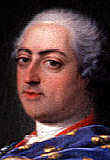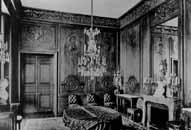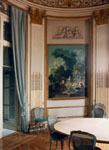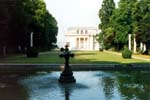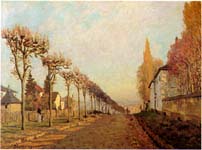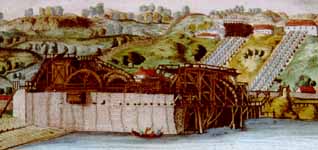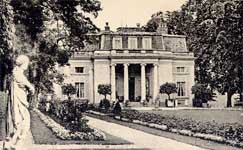A Look Back at Louveciennes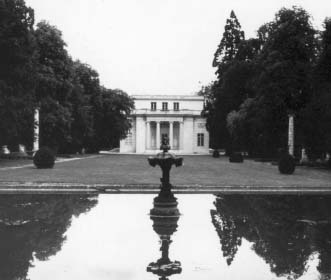
|
|
This is a collection of material about Louveciennes, which was home to the American School of Paris between 1959 and 1967. It has been assembled by an ASP alum who enjoyed the final five years there. April 1996 Last changed June 3, 2018 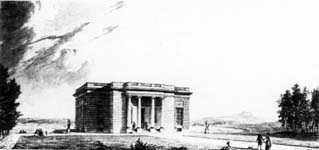
This drawing of the Pavillon once belonged to King George III and is now in the British Museum. The current top floor, not seen in this illustration, was added during Coty's reconstruction in the 1930's. "The chief interest at Louveciennes is the small freestanding pleasure pavilion commissioned in the late 18th century by Mme du Barry, Louis XV's last mistress. But even in this "folly" the emerging mood of reform expressed itself through the almost Platonic purity of the Neoclassical design prepared by Claude-Nicolas Ledoux (1736–1806). Devoid of Rococo classicism's curvilinear graces and soft, decorative transitions, the Louveciennes pavilion is little more than a crisply articulated, oblong box. A simple balustrade, rather than a pediment, crowns the central bay; thus, hardly a diagonal or an arabesque obtrudes within a realm derived directly from those most primary of forms, the cube and the sphere." 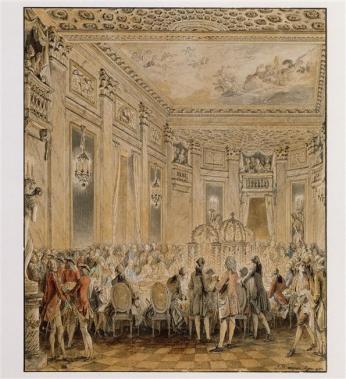
"when Mme du Barry marked the inaugural with a great banquet, the King attended" From "The Chateaux of France" by Daniel Wheeler, The Vendome Press 1979 This watercolor by Moreau le Jeune, sometimes described as a fete given in honor of the King on December 27, 1771 is actually the inaugural of the pavillon, "embellished with fireworks" which was held September 2, 1771. A play was also staged, La Chasse d'Henri IV, drame de Colle, and a concert at which the musicians apparently complained about having to play up in the little loges, now mirrored over. It is also interesting to note that Mme Du Barry, pushing the frontiers of furniture as well as architecture and art, has Louis XV seated in a Louis XVI style chair. The original is in the Cabinet des Dessins du Louvre, no 31 360] Full text of "Louveciennes" from "The Chateaux of France" by Daniel Wheeler, with additional photosThomas Jefferson was impressed by what he saw at Louveciennes. In a letter to Maria Cosway, written in 1786, he refers to the pavillon of Lucienne and the machine of Marly: "Oh! my dear friend, how you have revived me by recalling to my mind the transactions of that day! How well I remember them all, & that when I came home at night & looked back to the morning, it seemed to have been a month agone. Go on then, like a kind comforter & paint to me the day we went to St. Germains. How beautiful was every object! the Port de Reuilly, the hills along the Seine, the rainbows of the machine of Marly, the terrace of St. Germains, the chateaux, the gardens, the statues of Marly, the pavillon of Lucienne. Recollect too Madrid, Bagatelle, the King's garden, the Dessert. How grand the idea excited by the remains of such a column! The spiral staircase too was beautiful. Every moment was filled with something agreeable. The wheels of time moved on with a rapidity of which those of our carriage gave but a faint idea. And yet in the evening when one took a retrospect of the day, what a mass of happiness had we travelled over! Retrace all those scenes to me, my good companion, & I will forgive the unkindness with which you were chiding me. The day we went to St. Germains was a little too warm, I think; was it not?" Portraits of Mme Du Barry by Vigée Le Brun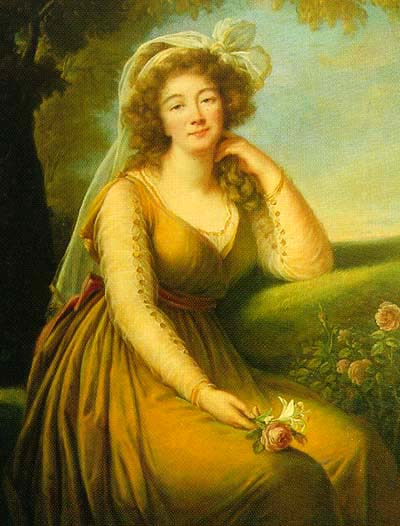 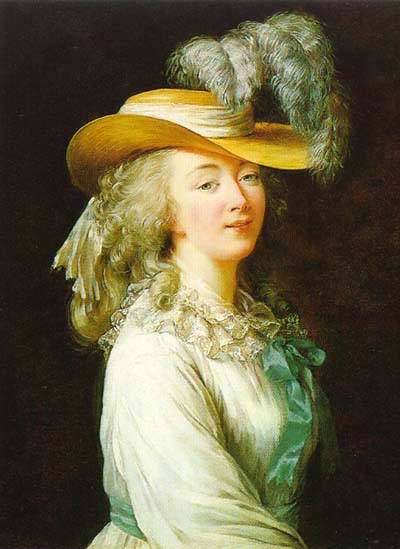 Mme Elizabeth Vigée Le Brun, a court painter, friend and confidante of Mme. Du Barry, painted these two portraits in 1783 and 1789 Vigée Le Brun memoirs of Mme Du Barry from From: Memoirs of Madame Vigée Lebrun (1903) by Elisabeth Vigée Le Brun (1755-1842); Translated by Lionel Strachey The pavillon Du Barry before Coty's renovationA selection of photos from the 1920's, before the building was rebuilt.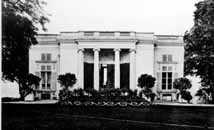
Description of the history of the Pavillon de Musique from the current owners,the Julienne Dumeste Foundation
|
